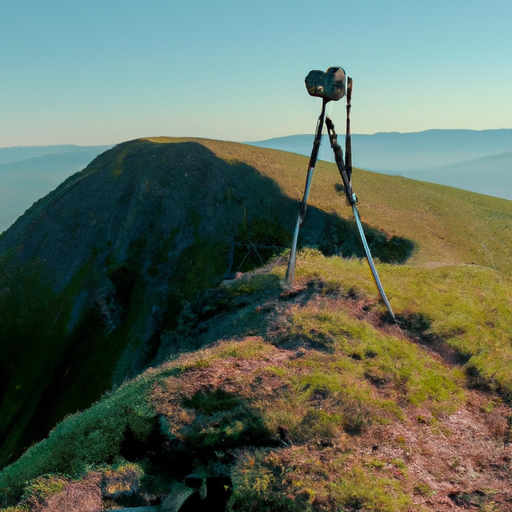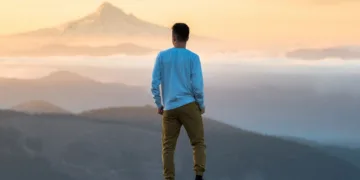Table of Contents
«Capture the beauty of nature – Become a Landscape Photographer!»
Introduction
Landscape photography is a beautiful and rewarding art form that can take you to some of the most stunning places in the world. Whether you’re a beginner or a professional, becoming a landscape photographer requires a lot of dedication and hard work. It’s important to understand the basics of photography, such as composition, lighting, and camera settings, as well as the technical aspects of landscape photography, such as filters, lenses, and post-processing. With the right knowledge and practice, you can become a successful landscape photographer and capture breathtaking images of the world around you.
How to Choose the Right Camera and Gear for Landscape Photography
Landscape photography is a popular and rewarding hobby, but it requires the right equipment to capture the beauty of the natural world. Choosing the right camera and gear for landscape photography can be a daunting task, but with a few tips, you can make sure you have the right tools for the job.
First, consider the type of camera you need. Digital single-lens reflex (DSLR) cameras are the most popular choice for landscape photography, as they offer the highest image quality and the most control over settings. If you’re on a budget, a mirrorless camera may be a good option, as they are smaller and lighter than DSLRs and offer similar image quality.
Next, think about the lenses you need. Wide-angle lenses are essential for capturing sweeping landscapes, while telephoto lenses are great for capturing distant details. If you’re just starting out, a standard zoom lens is a good choice, as it offers a range of focal lengths in one lens.
In addition to a camera and lenses, you’ll need a few other pieces of gear. A tripod is essential for keeping your camera steady and allowing you to take long exposures. A remote shutter release or intervalometer can help you take long exposures without having to touch the camera, which can cause camera shake. A polarizing filter can help reduce glare and reflections, while a neutral density filter can help you take long exposures during the day.
Finally, consider the type of accessories you need. A camera bag is essential for carrying your gear, while a rain cover can help protect your camera in wet weather. A lens hood can help reduce flare, while a lens cleaning kit can help keep your lenses free of dust and dirt.
By taking the time to choose the right camera and gear for landscape photography, you can ensure that you have the right tools to capture stunning images of the natural world.
Tips for Capturing the Perfect Landscape Shot
1. Choose the Right Time of Day: The best time to take landscape photos is during the golden hour, which is the hour before sunset and the hour after sunrise. During this time, the light is softer and warmer, creating a beautiful atmosphere for your photos.
2. Use a Tripod: A tripod is essential for capturing sharp landscape photos. It will help you keep your camera steady and reduce camera shake.
3. Use a Wide-Angle Lens: A wide-angle lens will help you capture more of the landscape in your photo. It will also help you create a sense of depth and scale in your photos.
4. Use a Polarizing Filter: A polarizing filter will help reduce glare and reflections from the sun, making your photos look more vibrant and saturated.
5. Use a Low ISO: A low ISO will help you capture sharper photos with less noise.
6. Use a Long Exposure: A long exposure will help you capture the movement of clouds or water in your photos.
7. Use a Remote Shutter Release: A remote shutter release will help you take sharper photos by reducing camera shake.
8. Use a Graduated Neutral Density Filter: A graduated neutral density filter will help you balance the exposure between the sky and the foreground in your photos.
9. Use a Flash: A flash can help you add a bit of light to your photos, making them look more vibrant and alive.
10. Take Multiple Shots: Taking multiple shots of the same scene will help you capture the perfect landscape photo.
How to Use Natural Light to Enhance Your Landscape Photos

Good landscape photography requires the right combination of skill, equipment, and natural light. Natural light is an essential element of landscape photography, as it can be used to create stunning images that capture the beauty of the outdoors. Here are some tips on how to use natural light to enhance your landscape photos.
First, consider the time of day when you plan to take your photos. The best time for landscape photography is during the golden hour, which is the hour before sunset and the hour after sunrise. During this time, the light is softer and warmer, creating a beautiful, natural glow.
Second, pay attention to the direction of the light. When the sun is behind you, it will create a backlit effect, which can be used to create dramatic silhouettes. When the sun is in front of you, it will create a frontlit effect, which can be used to create a more even, balanced exposure.
Third, use the light to create shadows and highlights. Shadows can be used to add depth and texture to your photos, while highlights can be used to draw attention to certain elements in the scene.
Finally, use the light to create interesting compositions. Look for patterns and shapes in the landscape, and use the light to bring them out. You can also use the light to create leading lines, which can help draw the viewer’s eye through the scene.
By using these tips, you can use natural light to create stunning landscape photos. With a little practice and experimentation, you can use natural light to create beautiful images that capture the beauty of the outdoors.
How to Find Inspiration for Your Landscape Photography
Landscape photography is a popular and rewarding form of photography, but it can be difficult to find inspiration for your shots. Fortunately, there are a few simple steps you can take to help you find the perfect landscape to capture.
First, take a look at the world around you. Look for interesting patterns, colors, and textures in the environment. Pay attention to the way the light falls on the landscape and how it changes throughout the day. Take note of the different elements in the landscape, such as trees, rocks, and water.
Second, look for inspiration in other photographers’ work. Look at the work of professional landscape photographers and take note of the techniques they use to capture their shots. Look for ideas that you can use in your own work.
Third, take a look at the work of other artists. Look at paintings, drawings, and sculptures that feature landscapes. Take note of the colors, textures, and shapes that the artist has used to create their work.
Finally, take a look at the world around you. Look for interesting places to explore and photograph. Take a walk in the woods or visit a nearby beach. Look for interesting angles and perspectives that you can use to capture the beauty of the landscape.
By taking the time to look for inspiration in the world around you, you can find the perfect landscape to capture. With a little bit of creativity and patience, you can create stunning landscape photographs that will be admired for years to come.
How to Edit Your Landscape Photos for Maximum Impact
Editing landscape photos can be a daunting task, but with the right tools and techniques, you can create stunning images that will have maximum impact. Here are some tips to help you get the most out of your landscape photos.
1. Adjust the Exposure: The first step in editing your landscape photos is to adjust the exposure. This will help you bring out the details in the shadows and highlights of your image. You can do this by using the Levels or Curves tools in your photo editing software.
2. Enhance the Colors: Enhancing the colors in your landscape photos can make them look more vibrant and eye-catching. You can do this by using the Hue/Saturation or Color Balance tools in your photo editing software.
3. Sharpen the Image: Sharpening your landscape photos can help bring out the details and make them look more crisp and clear. You can do this by using the Unsharp Mask or High Pass Filter tools in your photo editing software.
4. Add a Vignette: Adding a vignette to your landscape photos can help draw the viewer’s eye to the center of the image. You can do this by using the Vignette tool in your photo editing software.
5. Add a Filter: Adding a filter to your landscape photos can help give them a unique look and feel. You can do this by using the Filter Gallery or Adjustment Layers tools in your photo editing software.
By following these tips, you can create stunning landscape photos that will have maximum impact. With the right tools and techniques, you can take your landscape photography to the next level.
Conclusion
Becoming a landscape photographer requires dedication, patience, and a passion for capturing the beauty of nature. It is important to practice and develop your skills, learn the basics of photography, and invest in quality equipment. Additionally, it is important to research the best locations for landscape photography, and to be aware of the changing light and weather conditions. With the right knowledge and dedication, anyone can become a successful landscape photographer.

































